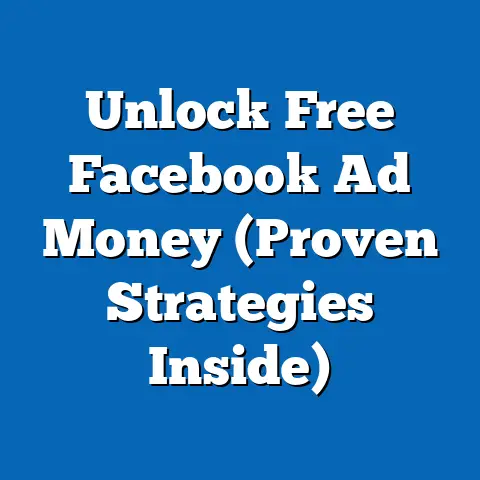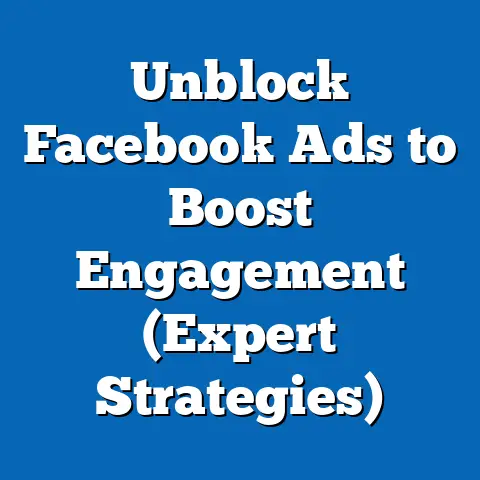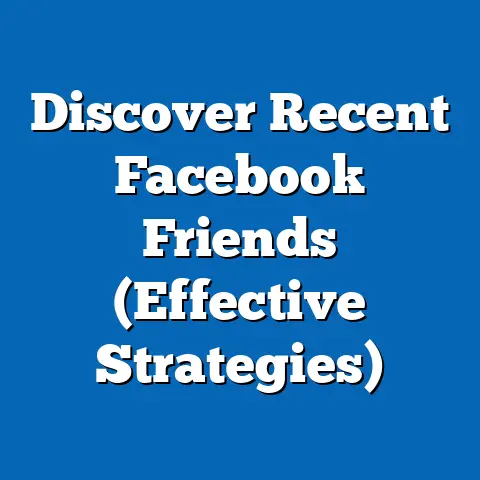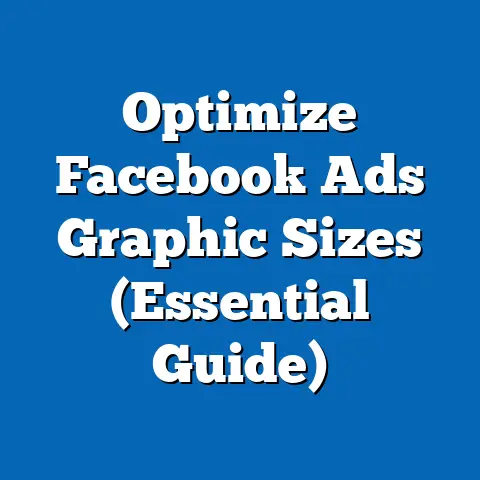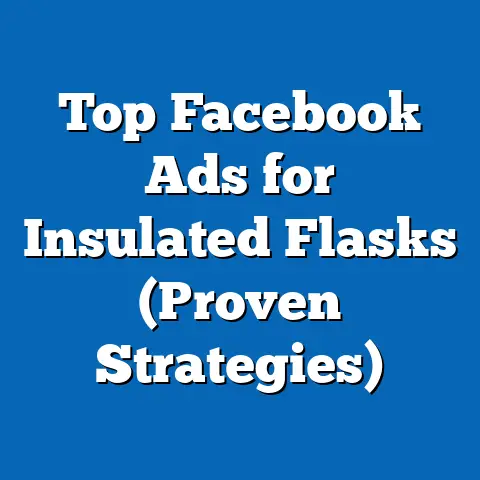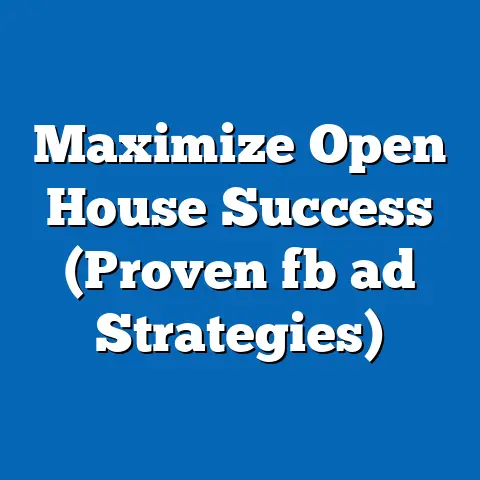Unlock Top Facebook Ad Strategies (Expert Agency Insights)
Facebook advertising has become an indispensable tool for businesses of all sizes. What I find particularly appealing, having worked in digital marketing for over a decade, is how accessible Facebook Ads Manager is. It’s designed to be user-friendly, allowing even those new to the world of digital ads to jump in and start creating campaigns. However, the difference between dabbling and truly succeeding often lies in understanding and implementing strategies that have been proven effective by expert agencies.
In this article, I’m pulling back the curtain to share insights from these agencies, distilling their expertise into actionable tips and real-world examples. My goal is to provide you with a clear, easy-to-grasp guide that empowers you to create and manage Facebook ad campaigns that drive real results. We’ll cover everything from crafting compelling ad content to mastering targeting, budgeting, and optimization. Get ready to unlock the full potential of Facebook advertising for your business.
Understanding the Facebook Advertising Landscape
The evolution of Facebook advertising is fascinating. It started as a simple way for businesses to connect with their customers, but it’s grown into a sophisticated, data-driven platform. Today, Facebook advertising is a cornerstone of the digital marketing ecosystem, offering unparalleled reach and targeting capabilities.
One of the first things I tell people new to Facebook Ads is to familiarize themselves with the different ad formats. Here’s a quick rundown:
- Image Ads: Simple, effective, and perfect for showcasing products or services.
- Video Ads: Highly engaging and ideal for telling stories or demonstrating product features.
- Carousel Ads: Allow you to display multiple images or videos in a single ad, great for showcasing a range of products.
- Collection Ads: Designed for mobile shopping, these ads feature a hero video or image with related products below.
- Instant Experience Ads: Full-screen, mobile-optimized ads that load quickly and provide an immersive experience.
- Lead Ads: Designed to collect leads directly from Facebook, making it easy for potential customers to sign up for newsletters, request quotes, or download resources.
Each ad type has its unique strengths and benefits. For instance, video ads tend to have higher engagement rates, while carousel ads are excellent for showcasing multiple products.
Did you know? Facebook’s advertising reach is astounding. As of early 2024, Facebook boasts over 2 billion active users, making it one of the most powerful advertising platforms globally. This vast reach, combined with Facebook’s sophisticated targeting options, makes it a must-use platform for businesses looking to connect with their target audience.
Crafting Compelling Ad Content
Effective ad copy is the heart of any successful Facebook campaign. I’ve seen firsthand how a well-crafted ad can dramatically improve results. It’s not just about writing catchy slogans; it’s about understanding your audience and speaking directly to their needs and desires.
Here are some key elements of compelling ad copy:
- Clear Messaging: Your message should be concise, easy to understand, and immediately grab the reader’s attention.
- Strong Calls-to-Action (CTAs): Tell your audience exactly what you want them to do, whether it’s “Shop Now,” “Learn More,” or “Sign Up Today.”
- Benefits-Driven Language: Focus on the benefits your product or service offers, not just its features.
- Use of Power Words: Incorporate words that evoke emotion and create a sense of urgency, such as “Limited Time,” “Exclusive,” or “Transform.”
Let’s look at an example. I recently worked with a local bakery that was struggling to attract new customers. Their initial ad copy was bland and generic. After some tweaking, we revamped their ads with a focus on sensory language and a strong CTA:
Before: “Delicious baked goods! Visit our store today.”
After: “Indulge in the irresistible aroma of freshly baked croissants! Treat yourself to a taste of heaven. Order online now and get 20% off your first purchase!”
The revised ad copy, with its emphasis on sensory details and a clear offer, resulted in a 40% increase in online orders.
Visuals are equally important. High-quality images and videos can capture attention and convey your message more effectively than text alone. Here are some tips:
- Use High-Resolution Images: Avoid blurry or pixelated images.
- Showcase Your Product in Action: Demonstrate how your product or service solves a problem or improves someone’s life.
- Use Bright, Eye-Catching Colors: Colors can evoke emotion and draw the eye.
- Keep Videos Short and Engaging: Aim for videos that are no longer than 15-30 seconds.
A/B Testing is Key: Expert agencies swear by A/B testing, and for good reason. It allows you to test different versions of your ad copy and visuals to see what resonates best with your audience. I recommend testing one variable at a time, such as the headline, image, or CTA, to isolate the impact of each element.
Targeting Your Audience Effectively
Facebook’s targeting capabilities are incredibly powerful. You can target users based on demographics, interests, behaviors, and more. I’ve seen campaigns go from struggling to thriving simply by refining the target audience.
Here’s a breakdown of the key targeting options:
- Demographic Targeting: Target users based on age, gender, location, education, and other demographic factors.
- Interest-Based Targeting: Target users based on their interests, hobbies, and the pages they like on Facebook.
- Behavioral Targeting: Target users based on their online behavior, such as purchase history, device usage, and travel habits.
- Custom Audiences: Upload your own customer data (email addresses, phone numbers) to create targeted audiences.
- Lookalike Audiences: Create audiences that are similar to your existing customers, expanding your reach to new potential customers.
Defining and Segmenting Your Audience: Before you start creating ads, take the time to define your ideal customer. What are their demographics? What are their interests? What problems are they trying to solve?
Once you have a clear picture of your ideal customer, you can segment your audience into smaller, more targeted groups. For example, if you’re selling fitness equipment, you might create separate segments for beginners, intermediate athletes, and advanced bodybuilders.
Custom Audiences and Lookalike Audiences: These are two of the most powerful targeting tools available on Facebook. Custom Audiences allow you to target your existing customers with tailored ads, while Lookalike Audiences allow you to reach new customers who are similar to your best customers.
Retargeting: Don’t underestimate the power of retargeting. These are ads shown to people who have already interacted with your business, such as visiting your website or viewing a product page. I’ve found that retargeting campaigns often have significantly higher conversion rates than other types of campaigns.
Budgeting and Bidding Strategies
Setting the right budget and choosing the right bidding strategy are crucial for maximizing your return on investment (ROI). I’ve seen many businesses waste money on Facebook ads simply because they didn’t understand how to budget effectively.
Here are some key considerations:
- Daily vs. Lifetime Budgets: Daily budgets allow you to spend a fixed amount each day, while lifetime budgets allow you to spend a fixed amount over the entire duration of your campaign.
- Automatic vs. Manual Bidding: Automatic bidding allows Facebook to automatically set your bids based on your campaign objectives, while manual bidding gives you more control over your bids.
- Campaign Objectives: Your campaign objective will influence your bidding strategy. For example, if your objective is to drive traffic to your website, you might choose a cost-per-click (CPC) bidding strategy.
Optimizing Ad Spend: Here are some tips for getting the most out of your ad budget:
- Start Small: Begin with a small budget and gradually increase it as you see positive results.
- Monitor Your Performance: Keep a close eye on your ad performance and make adjustments as needed.
- Use Ad Scheduling: Schedule your ads to run during the times when your target audience is most active on Facebook.
- Test Different Bidding Strategies: Experiment with different bidding strategies to see what works best for your campaign objectives.
Measuring Success and Ad Optimization
Measuring the success of your Facebook ad campaigns is essential for making data-driven decisions and optimizing your performance. I always emphasize the importance of tracking key performance indicators (KPIs).
Here are some of the most important KPIs to track:
- Click-Through Rate (CTR): The percentage of people who see your ad and click on it.
- Conversion Rate: The percentage of people who click on your ad and complete a desired action, such as making a purchase or filling out a form.
- Cost Per Action (CPA): The cost of acquiring a customer or achieving a desired action.
- Return on Ad Spend (ROAS): The amount of revenue generated for every dollar spent on advertising.
Analyzing Performance Data: Once you have data on your KPIs, you can start analyzing it to identify areas for improvement. For example, if your CTR is low, you might need to revise your ad copy or visuals. If your conversion rate is low, you might need to improve your landing page or offer.
Facebook Analytics and Facebook Pixel: These are two powerful tools that can help you track user interactions and refine your ad strategies. Facebook Analytics allows you to track user behavior on your website and app, while Facebook Pixel allows you to track conversions and retarget users who have visited your website.
Expert Agency Insights on Optimization: Expert agencies are constantly testing and refining their ad strategies based on performance data. I’ve learned from some of the best, and here are a few key takeaways:
- Don’t Be Afraid to Experiment: Try new things and see what works.
- Stay Up-to-Date: Facebook’s advertising platform is constantly evolving, so it’s important to stay up-to-date on the latest features and best practices.
- Focus on the User Experience: Make sure your ads are relevant, engaging, and provide value to the user.
Conclusion
Facebook advertising offers immense potential for businesses of all sizes. It’s a platform that’s designed to be accessible, and with the right strategies, anyone can achieve success. By understanding the Facebook advertising landscape, crafting compelling ad content, targeting your audience effectively, budgeting wisely, and measuring your results, you can unlock the full potential of Facebook ads.
I encourage you to take the insights shared in this article and put them into action. Start by defining your target audience and crafting compelling ad copy. Experiment with different targeting options and bidding strategies. And most importantly, track your results and make data-driven decisions.
Remember, success with Facebook advertising is achievable for everyone. With a little effort and dedication, you can harness the power of Facebook ads to drive business growth and customer engagement. The key is to start, learn, and adapt. Don’t be afraid to make mistakes along the way; they’re valuable learning opportunities. Now go out there and create some amazing Facebook ad campaigns!

